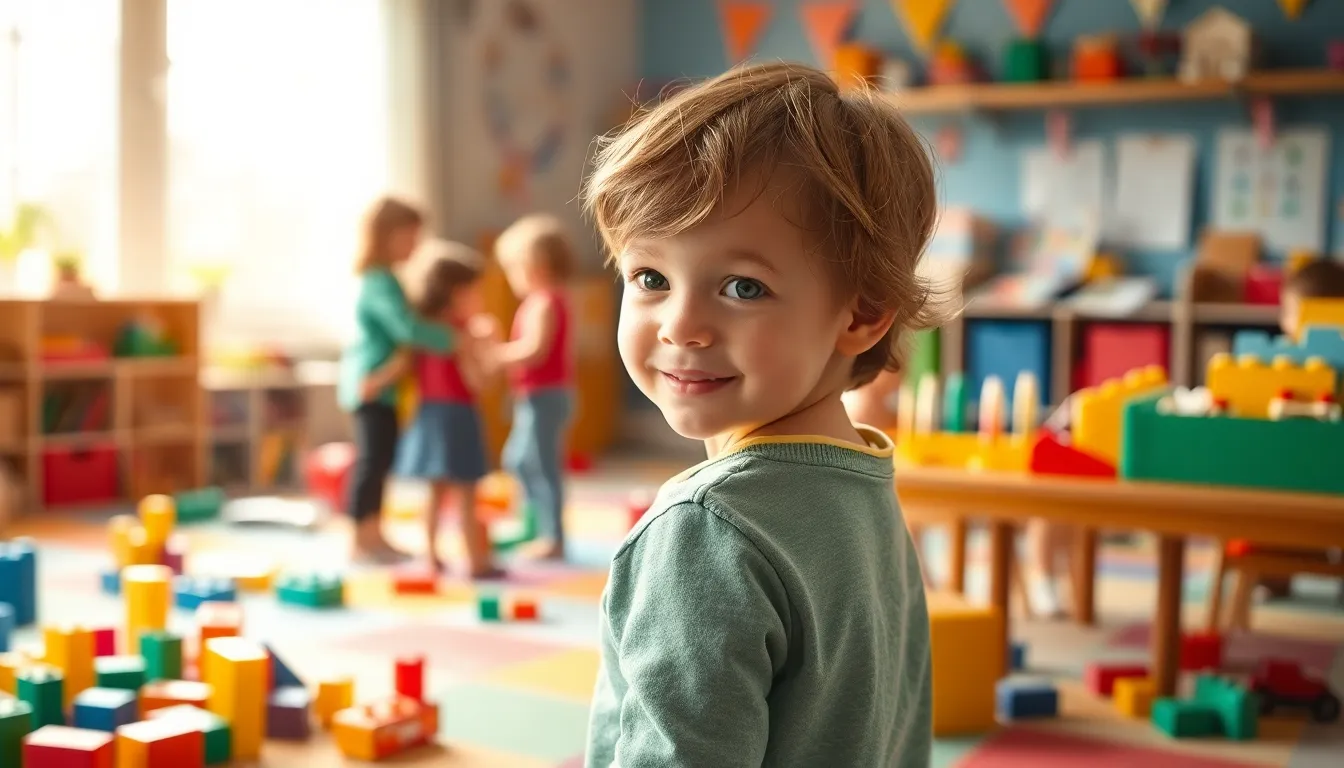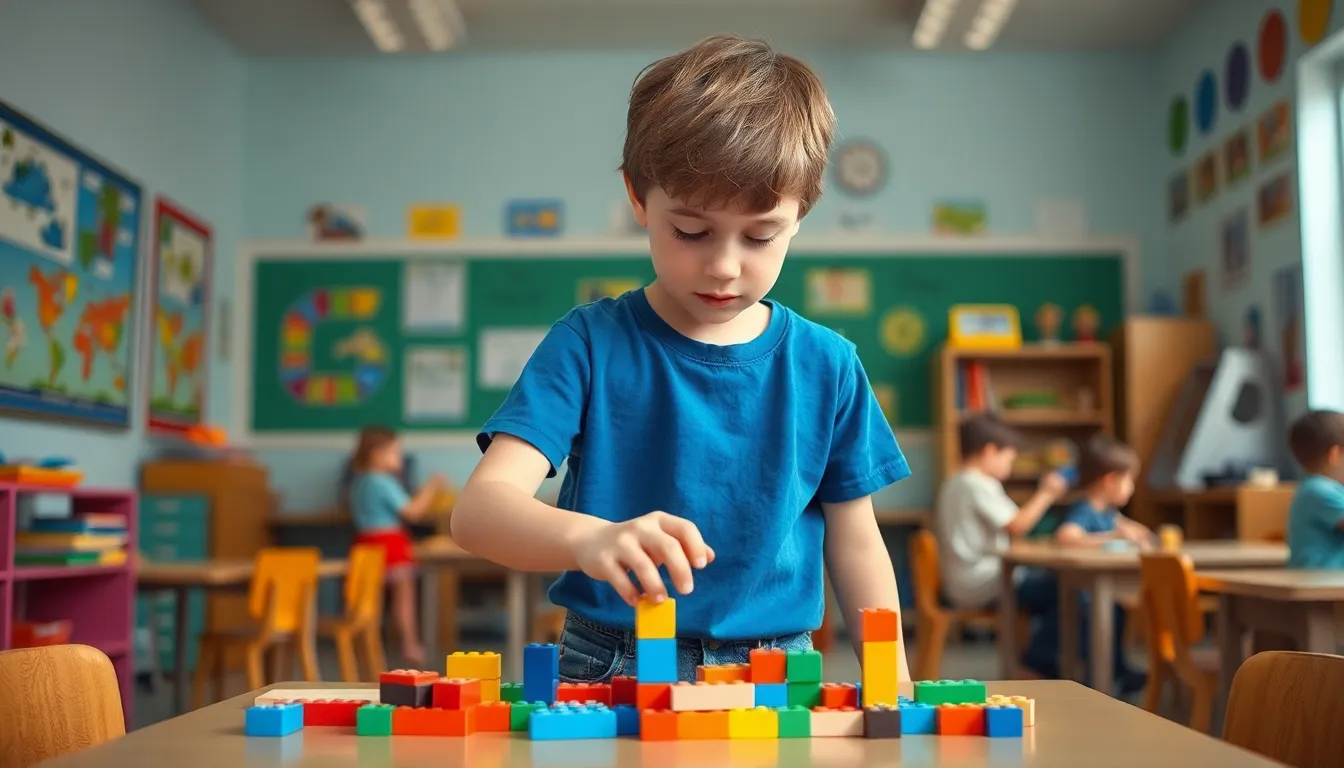Every parent knows the struggle of dealing with a shy child. It’s like trying to coax a cat into a bath—good luck with that! While some kids are natural social butterflies, others prefer the cozy comfort of their own little world. But what if that world could expand? Helping shy children find their voice can unlock a treasure trove of confidence and connection.
Table of Contents
ToggleUnderstanding Shyness in Children
Shyness in children can stem from various factors, affecting their social interactions and emotional well-being. Recognizing these elements allows parents to better support their shy children.
Causes of Shyness
Genetics plays a significant role in determining temperamental traits related to shyness. Children may inherit tendencies toward anxiety or introversion from their parents. Environmental factors, like parenting styles and peer interactions, can also contribute. For instance, overly protective parenting may increase a child’s apprehension in social situations. Additionally, past experiences, such as negative encounters in school or group settings, may prompt a child to withdraw. Understanding these causes helps parents address underlying issues.
Signs of Shyness
Noting specific behaviors can identify shyness in children. Avoidance of eye contact during conversations often indicates discomfort. Children might also cling to their parents or caregivers in new situations. Hesitance when engaging with peers, especially during group activities, suggests social anxiety. Furthermore, signs like stuttering or soft-spoken voices can manifest when a shy child speaks. Recognizing these signs facilitates timely interventions, guiding children toward more confident social interactions.
Strategies for Helping Shy Children

Parents can apply specific strategies to assist shy children in overcoming social challenges. These methods help foster confidence and encourage healthy interactions.
Encouraging Social Interaction
Creating opportunities for interaction proves essential. Invite friends over for playdates, offering a comfortable setting. Enroll children in group activities like sports or arts, which promote teamwork. Gradually introduce new social settings, allowing children to acclimate at their own pace. Praise small efforts, highlighting any positive steps taken in social situations. Reinforcing positive experiences with peers builds excitement about future interactions.
Building Confidence
Boosting self-esteem starts with celebrating individual strengths. Engage children in activities where they excel, fostering a sense of achievement. Gradually challenge them with manageable social tasks, increasing complexity as they improve. Teach effective communication skills, emphasizing the importance of listening and responding. Role-playing different scenarios allows children to practice in a safe space. Encourage affirmation, guiding children to recognize their accomplishments and talents.
Creating a Supportive Environment
A nurturing home environment supports shy children effectively. Encourage open communication, allowing children to express feelings without judgment. Ensure family members model positive social behaviors, serving as examples. Provide reassurance and understanding when children face challenges, effectively reducing anxiety. Designate family time for sharing stories or discussing daily experiences, enhancing interpersonal skills. Establish routines that promote social opportunities, such as regular family outings or community events.
Activities to Promote Interaction
Engaging shy children in activities promotes their social skills and helps them connect with peers. Several options are suitable for encouraging positive interactions.
Group Games
Group games create a lively atmosphere where shy children can gradually engage with others. Activities like team-building exercises foster collaboration. Games such as Simon Says or Duck, Duck, Goose require minimal verbal interaction initially, helping children ease into social settings. Kids can also participate in cooperative games, like building a tower with blocks or solving a puzzle together, which emphasizes teamwork. Celebrating small victories in these games builds confidence and encourages shy children to interact with their peers more comfortably.
Creative Arts and Crafts
Creative arts and crafts provide an excellent platform for shy children to express themselves. Art projects encourage teamwork, helping kids collaborate on masterpieces or engage in group activities. Simple tasks such as painting murals or making greeting cards foster discussion and creativity. Hosting a craft day can promote socializing, allowing children to share supplies and ideas while working on their projects. By showcasing completed works, kids gain recognition for their contributions, boosting their self-esteem and encouraging future interactions.
Role of Parents and Educators
Parents and educators play crucial roles in helping shy children develop confidence and social skills. Their supportive actions significantly impact how these children interact with peers.
Communicating Effectively
Effective communication involves active listening and using open-ended questions. Parents should encourage children to share their thoughts and feelings without fear of judgment. Educators can create a welcoming atmosphere by addressing the child’s insecurities. Utilizing role-play scenarios during group discussions allows shy children to practice communication in a low-pressure setting. Additionally, body language, such as maintaining eye contact and smiling, fosters comfort and encourages participation. Acknowledging small contributions also reinforces positive communication.
Supportive Techniques
Utilizing supportive techniques can greatly enhance a shy child’s confidence. Establishing routines allows for predictability in social situations, reducing anxiety. Encouraging gradual exposure to group settings helps children adapt comfortably. Parents can also model social interactions, demonstrating appropriate behaviors for their children to observe. Educators might implement cooperative learning strategies to promote teamwork, allowing shy children to engage in activities without feeling overwhelmed. Celebrating progress, no matter how small, bolsters confidence and motivates continued social exploration.
Helping shy children navigate their social worlds is a vital journey for parents and educators. By recognizing the unique challenges these children face and implementing supportive strategies, it’s possible to foster their confidence and social skills. Creating opportunities for interaction and celebrating small achievements can make a significant difference.
With patience and encouragement, shy children can learn to express themselves and connect with others more comfortably. The collaborative efforts of families and educators play a crucial role in this process, ultimately leading to happier and more confident children. Embracing this journey not only enriches their lives but also strengthens the bonds within families and communities.



